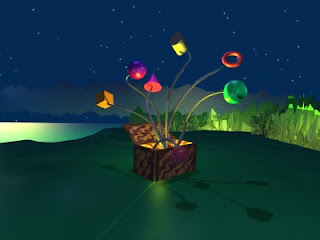 Ronda is a small town in southern Spain I visited ( a decade ago!), the town is built on a deep gorge that offers tremendous panoramic views and sunsets. Here I capture the sense of distance, and also some of the unique southern architecture.
Ronda is a small town in southern Spain I visited ( a decade ago!), the town is built on a deep gorge that offers tremendous panoramic views and sunsets. Here I capture the sense of distance, and also some of the unique southern architecture.In a few days I made a dozen paintings in this town, it was certainly a wealth of material.
I discovered a mixture of colours in Hamilton Ontario of all places, that is very useful for tree covered mountains. The mixture begins with ceurelian blue and rose madder genuine, and then a dark green and a touch of yellow is added...the cool blue base and opacity of the ceurelian gives that blue 'distance' feel, and the other additives tint it with tree colours.
5x7" cold press. 1998




